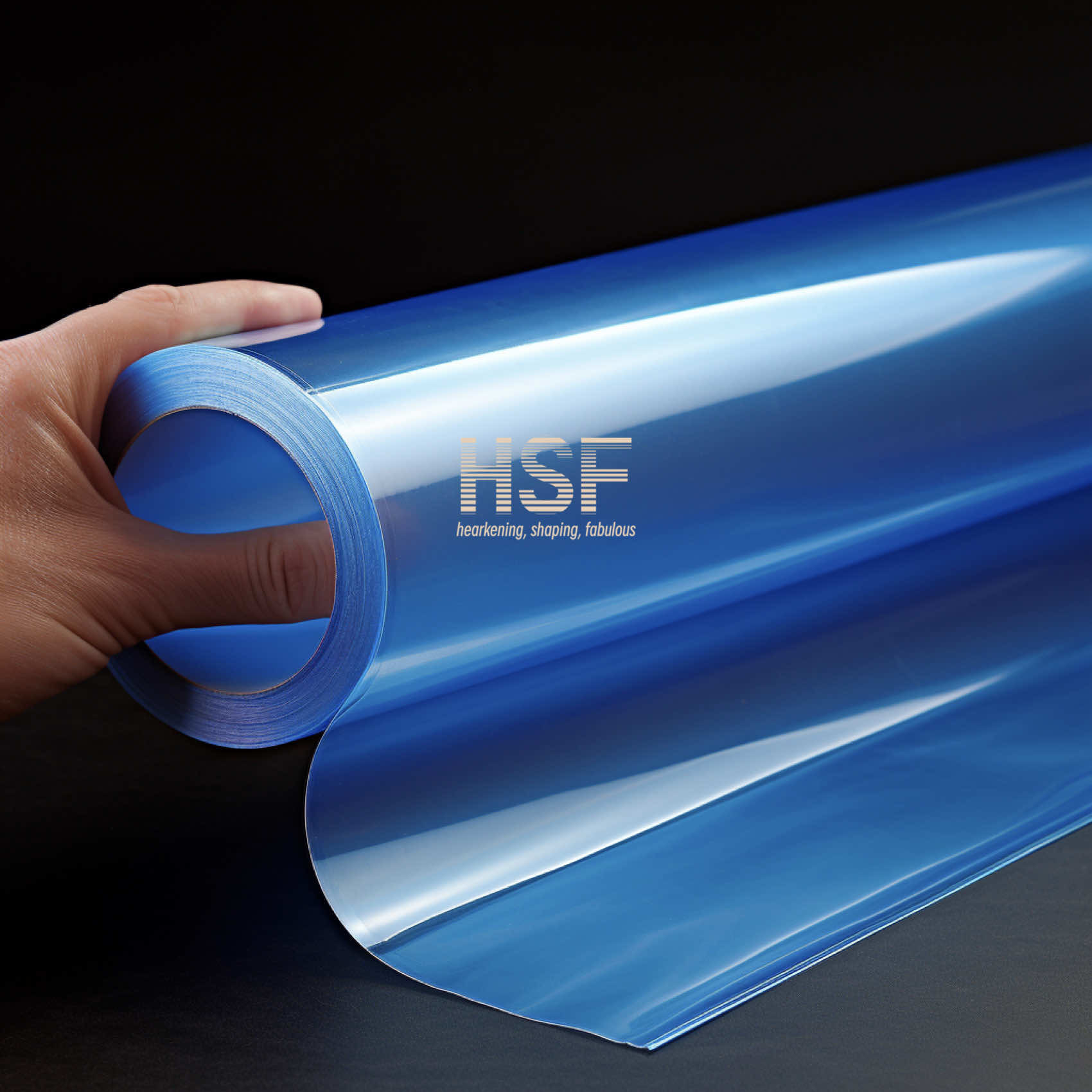Shanghai HSF Materials Technology Co., Ltd. |
|
Verified Suppliers
|
|
36 μm blue PET anti static film, available in many colors, for electronics, medical, automotive and printing etc.
| S/N | Item | Value | Test Method | ||
| 1 | Backing Film Type | Blue PET 36 μm | ± 3% | ||
| 2 | Release Force (gf/25mm) | 8 | TESA 7475 Finat 10. | ||
| 3 | Sub-sequent Adhesion Rate (%) | 89 | |||
| 4 | Total Thickness (μm) | 22 | - | ||
| 5 | Sheet Resistance | 10^6-10^11 ohm/s.q. | Contact by five point probe | ||
| 6 | Tensile Strength | MD | N/mm² | 207 | DIN53455-6-5 |
| TD | N/mm² | 252 | |||
| 7 | Elongation @ break (%) | MD | % | 173 | DIN53455-6-5 |
| TD | % | 126 | |||
Semiconductor Manufacturing: The 36-micron blue PET anti-static film plays a crucial role in semiconductor manufacturing processes, where static electricity poses a significant risk to sensitive components. It serves as a protective layer or packaging material for semiconductor wafers, integrated circuits, or other electronic elements during fabrication, assembly, or transportation. The blue color of the film aids in easy identification and differentiation, facilitating efficient production workflows.
ESD-Safe Workstations: In environments where electrostatic discharge (ESD) protection is paramount, such as electronics repair or assembly stations, the 36-micron blue PET anti-static film is a valuable asset. It acts as a work surface covering, preventing static charges from accumulating and damaging sensitive components. The film's anti-static properties ensure a controlled ESD-safe environment, while the blue color provides a visually distinct workspace.
Automotive Electronics: The automotive industry relies on the 36-micron blue PET anti-static film to protect sensitive electronics within vehicles. It serves as a shielding layer for electronic control units (ECUs), wiring harnesses, or dashboard displays, guarding against static-related issues. The film's blue color can aid in identifying specific electronic components during assembly or maintenance.
Medical Device Packaging: The 36-micron blue PET anti-static film finds application in packaging static-sensitive medical devices and equipment. It acts as a protective barrier, preventing static charges from damaging delicate components or affecting device functionality. The blue color of the film enables easy recognition of the packaged medical devices, streamlining inventory management and identification processes.
Art Conservation: The 36-micron blue PET anti-static film is utilized in art conservation settings to safeguard delicate artworks and artifacts from static-related damage. It serves as a protective layer for paintings, photographs, or documents, preventing static charges from attracting dust or causing surface disruptions. The vibrant blue color of the film adds an aesthetic touch while providing a clear barrier of protection.
Please note that the suitability of the 36-micron blue PET anti-static film for specific applications should be verified based on industry requirements, manufacturer guidelines, and customization options available.
The main feature of PET anti-static coated film is its ability to prevent the buildup of static electricity.
It has a conductive coating on one or both sides of the film, which allows charges to dissipate and prevents static buildup.
This results in improved handling, processing, and protection of sensitive components and products.
The main colors of the film commonly used in application scenarios are transparent or translucent (colorless).
However, other colors such as pink, blue, and yellow may also be used, depending on the application.
The color is mainly used for identification purposes to differentiate between different types of films and facilitate quality control.
To coat an antistatic fluid onto an already produced PET film, the PET film is first unwound from its original roll and passed through
a coating applicator that applies the antistatic fluid to the film's surface. This can be done using various coating methods such as
gravure, reverse gravure, Mayer rod or air knife, depending on the viscosity of the antistatic fluid and the desired coating thickness.
After the coating process, the PET film is then passed through a drying oven to remove the solvent from the antistatic fluid.
Once the solvent is evaporated, the film is rewound onto a new roll.
It is important to note that the effectiveness of this coating process depends on the type of antistatic fluid used and its compatibility
with the PET film. The process should also be carefully controlled to maintain a consistent coating thickness and avoid any defects or
inconsistencies in the final product.

